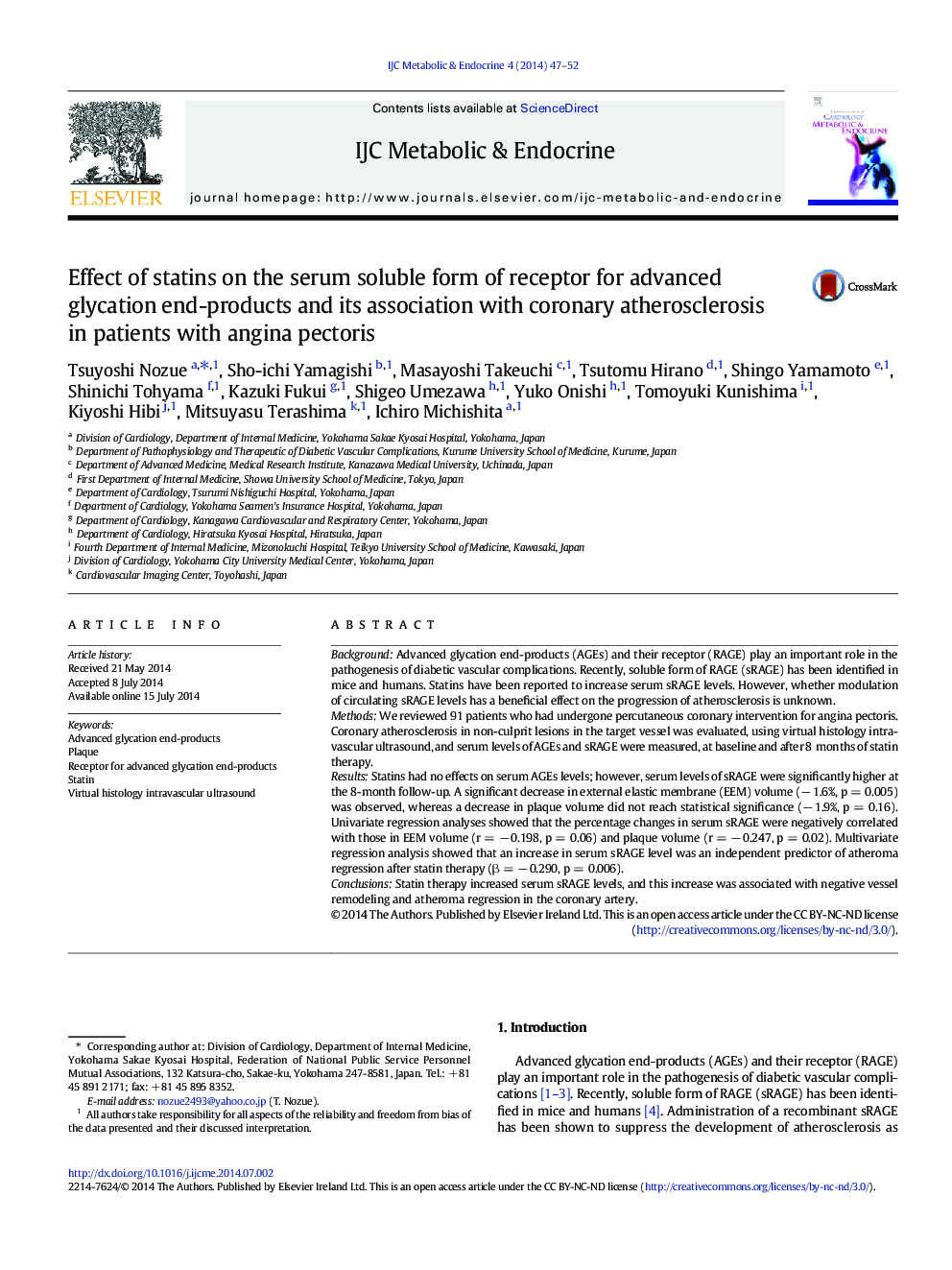| Article ID | Journal | Published Year | Pages | File Type |
|---|---|---|---|---|
| 2927282 | IJC Metabolic & Endocrine | 2014 | 6 Pages |
BackgroundAdvanced glycation end-products (AGEs) and their receptor (RAGE) play an important role in the pathogenesis of diabetic vascular complications. Recently, soluble form of RAGE (sRAGE) has been identified in mice and humans. Statins have been reported to increase serum sRAGE levels. However, whether modulation of circulating sRAGE levels has a beneficial effect on the progression of atherosclerosis is unknown.MethodsWe reviewed 91 patients who had undergone percutaneous coronary intervention for angina pectoris. Coronary atherosclerosis in non-culprit lesions in the target vessel was evaluated, using virtual histology intravascular ultrasound, and serum levels of AGEs and sRAGE were measured, at baseline and after 8 months of statin therapy.ResultsStatins had no effects on serum AGEs levels; however, serum levels of sRAGE were significantly higher at the 8-month follow-up. A significant decrease in external elastic membrane (EEM) volume (− 1.6%, p = 0.005) was observed, whereas a decrease in plaque volume did not reach statistical significance (− 1.9%, p = 0.16). Univariate regression analyses showed that the percentage changes in serum sRAGE were negatively correlated with those in EEM volume (r = − 0.198, p = 0.06) and plaque volume (r = − 0.247, p = 0.02). Multivariate regression analysis showed that an increase in serum sRAGE level was an independent predictor of atheroma regression after statin therapy (β = − 0.290, p = 0.006).ConclusionsStatin therapy increased serum sRAGE levels, and this increase was associated with negative vessel remodeling and atheroma regression in the coronary artery.
